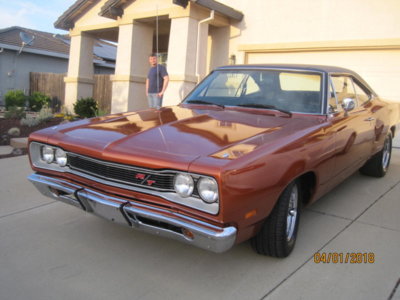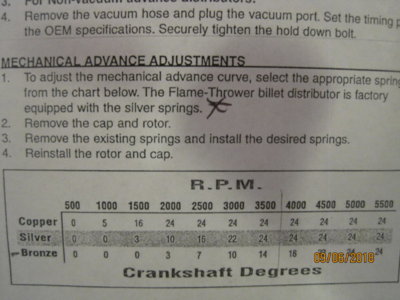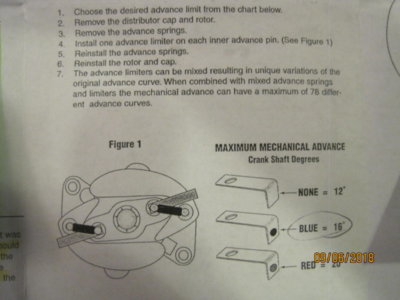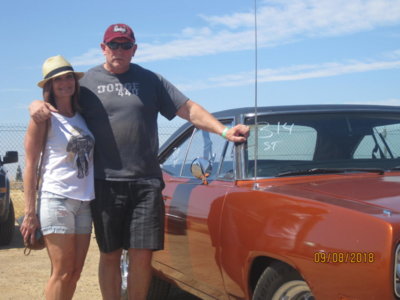Tomorrow is the annual Mopar at the Strip car show in Sacramento. Taking the Coronet, first time to the track. Only my second time, first was Fremont Raceway in the early 80's. I have a few questions about prepping, but first a quick overview:
69 Coronet, all steel body, full interior. Stock stroke 440 0.030 over. Forged pistons and crank, Stealth heads with minor porting; 10.5:1 CR. Hughes hyd FT cam 232/236 @ 0.050 .536/.546 110LSA 106 ICL. Eddy RPM intake, Dougs headers running 3" full exhaust. Fitech EFI. Pertronix dizzy with Blaster III coil. 727 TF Dynamic 3,000 stall converter. 3.55 8 3/4 with SG. New HD leaf springs, adj pinion snubber, battery in trunk. Have about 2,000 miles on the car and drive train since the resto.

The motor likes 19* initial - setup by the engine builder, confirmed again last night with a vacuum gauge - 15" at idle. The motors been pinging at WOT so I've been backing off this entire time. Checking the Pertronix instructions, the silver springs let in 24* mechanical. Found the problem - way too much advance.
Install the "blue" limiter, now total advance is 35*, all in at 2,500. Took the car for a spin last night and the difference was incredible. Pinging gone at WOT and transition from cruise to WOT. Even seems more responsive right off the line, which I didn't expect.
So my questions are: based upon the other springs and advance limiters available in the Pertronix kit, is there a better combo than the silver spring/blue limiter I'm running now?


For drag racing, does the motor want all in earlier or later?
And mixing in racing fuel should allow more advance - how much is too much advance? And does it matter if the additional timing comes from initial or mechanical? Thanks for your help.
69 Coronet, all steel body, full interior. Stock stroke 440 0.030 over. Forged pistons and crank, Stealth heads with minor porting; 10.5:1 CR. Hughes hyd FT cam 232/236 @ 0.050 .536/.546 110LSA 106 ICL. Eddy RPM intake, Dougs headers running 3" full exhaust. Fitech EFI. Pertronix dizzy with Blaster III coil. 727 TF Dynamic 3,000 stall converter. 3.55 8 3/4 with SG. New HD leaf springs, adj pinion snubber, battery in trunk. Have about 2,000 miles on the car and drive train since the resto.

The motor likes 19* initial - setup by the engine builder, confirmed again last night with a vacuum gauge - 15" at idle. The motors been pinging at WOT so I've been backing off this entire time. Checking the Pertronix instructions, the silver springs let in 24* mechanical. Found the problem - way too much advance.
Install the "blue" limiter, now total advance is 35*, all in at 2,500. Took the car for a spin last night and the difference was incredible. Pinging gone at WOT and transition from cruise to WOT. Even seems more responsive right off the line, which I didn't expect.
So my questions are: based upon the other springs and advance limiters available in the Pertronix kit, is there a better combo than the silver spring/blue limiter I'm running now?


For drag racing, does the motor want all in earlier or later?
And mixing in racing fuel should allow more advance - how much is too much advance? And does it matter if the additional timing comes from initial or mechanical? Thanks for your help.
Last edited:





















